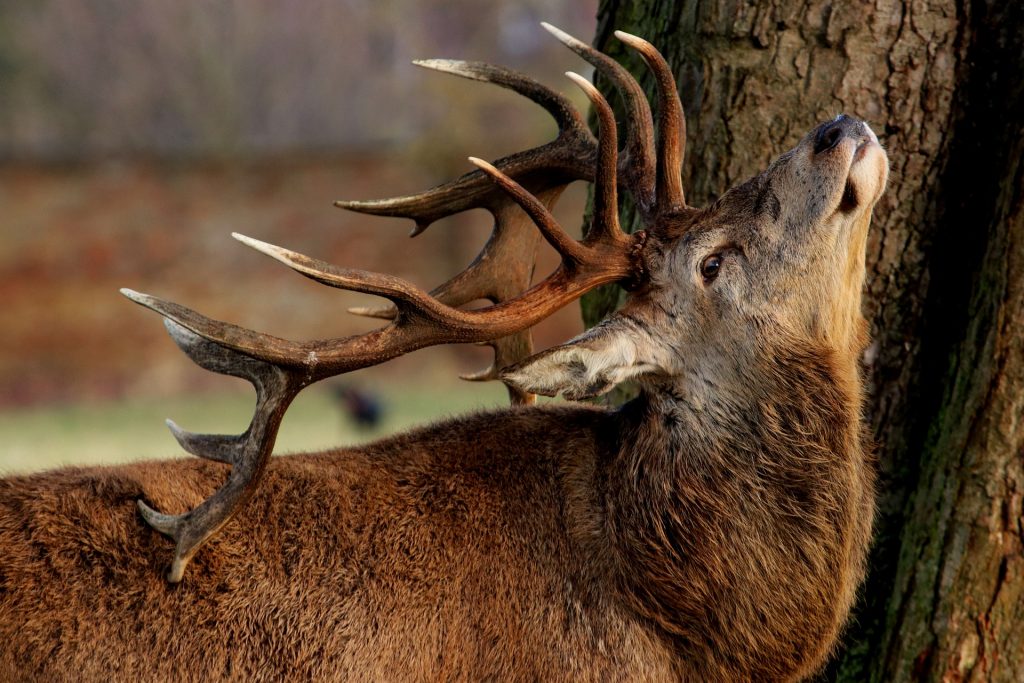We all know the tale of David and Goliath. Smaller, weaker David confronts bigger, stronger Goliath and prevails. The quintessential underdog story.
Why was David so much smaller? Why was Goliath so much bigger?
David was approximately 20 years old and fighting in 2 battles a day for 40 days. That’s rough. Goliath, a seasoned warrior, is older and the Philistines are winning more than they are losing.
David is young and resource starved. Goliath is not. David might have been as large as his foe with the proper nutrition and a few more years.
What in the world does an Old Testament story have to do with deer?
Antlers…of course.
Ask a biologist what influences antler size and you’re likely to get this answer: First and foremost, age and nutrition. Without the first two, genetics are irrelevant.
There is plenty of evidence to support this. In fact, European deer managers figured this out over 80 years ago.
But first, let’s go back in time. Not as far as the Old Testament, just to the 14th century.
In those medieval times in Europe, the antlers of red deer (Cervus elephus) were exchanged as gifts among the nobility. In fact, the largest known red deer antlers of Europe are all medieval stags. However, by the 20th century antlers of red deer in Europe precipitously shrunk from medieval times.
Here’s where the “bad genes” crowd starts to rumble. It’s a valid question. Were the genetics for large antlers removed from the population?
Or were modern deer simply a reflection of their environment?
A chemist, Franz Vogt, in the 1930s and 1940s gave us the answer. He analyzed the chemical composition of antlers and bones as well as forage plants. He concluded that available forage lacked the required nutrients to maximize the size of deer. This would also suggest that medieval deer lived in a more favorable environment, in terms of nutrition.
To test his hypothesis, Vogt developed a formulated diet and supplemented it with agricultural and natural forage. He obtained red deer from Silesia and Hungary. These deer matured at 180 kg (396 lb) and had an antler mass of 6 kg (13 lbs).
However on Vogt’s diet, the third generation stags attained body weights of 300-350 kg (660-770 lbs) and antler weights of 11-16 kg (24-35 lbs). Note that it took 3 generations, and he did absolutely no selective breeding.
Vogt’s experiment was disrupted by WWII, and although his stags were large they were only just beginning to challenge those medieval stags of centuries before. However, Vogt’s deer were larger than almost every red deer shot in Europe in the intervening centuries.
An experiment on free-ranging deer
Could Vogt’s results be replicated in the wild? Another German researcher, W. Frevert, tested Vogt’s theory on free-ranging red deer. He accomplished similar results by drastically reducing deer density, shifting the sex ratio to favor males (this excluded subadult males from breeding so they didn’t expend energy during the rut), and provided supplemental feed in winter.
To further prove the point that nutrition, rather than genetics, was the driving factor for body and antler size, Beninde (1937) documented that every translocation of large-antlered deer to improve genetics ended up with the offspring assuming the body characteristics of the local deer population within a few generations.
Vogt and others demonstrated that hereditary factors express themselves in response to environmental conditions. If environmental conditions are poor, it doesn’t matter how “good” the body size and antler genes are. They will not be expressed. Like a present that is never opened.
Do other species exhibit this environmental suppression of genetic potential? As a matter of fact, yes.
WWII did more than end Vogt’s experiment. It created one as well. With dire consequences for the test subjects.
Towards the end of WWII during a 6-month famine, over 20,000 Dutch starved to death during a Nazi blockade. Over 60 years later, repercussions are being seen in the adults who were unborn children during the famine.
Researchers have found that offspring of pregnant women during the famine are more likely to be overweight and have higher triglycerides in their blood. As a result, they have a shorter life expectancy than their siblings who were not in utero during the famine.
While the exact mechanism is unknown, the evidence is consistent with the hypothesis that environmental factors affect gene expression. David was just underfed!
So what does this mean for white-tailed deer?
Dr. Valerius Geist made some predictions in 1986.
An average white-tailed deer of 90 kg (198 lb) with an antler mass of 1.5 kg (3.3 lb) and scoring 150 Boone & Crocket points could increase to 200 kg (440 lb), an antler mass of 4-4.5 kg (9-10 lb), and score 200+ points.
But this does not happen overnight. He predicted it would take 14-16 years to achieve this body size and antler score.
Why so long? Because it’s not about the bucks!
Unless pregnant does are healthy, the genes that express large body size and antlers will not be turned on. And it takes more than one generation. The effects of “feast or famine” influence offspring for generations.
Once again Jeannine is right [Of course, I am. Just ask my spouse!] – antlers are over-rated! And females are under-appreciated. [Didn’t I write about this topic already?]
Do I advocate for drastically reducing deer density and supplemental feeding? As a scientist, that’s not for me to say (except that feeding deer has disease risks and simply providing corn will not grow big antlers). However, if you want larger deer, you really should focus on nutrition.
That’s part of why we are doing the Deer-Forest Study – to better understand how deer and the forest (their food source) interact.
-Duane Diefenbach
If you would like to receive email alerts of new blog posts, subscribe here.
And Follow us on Twitter @WTDresearch
